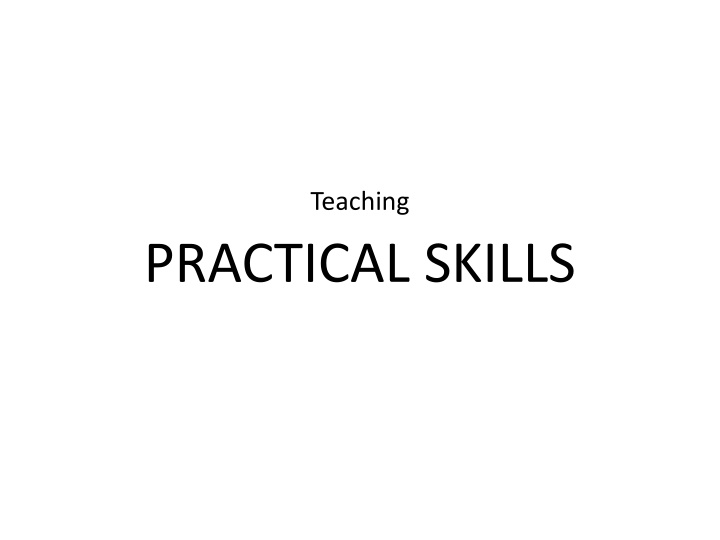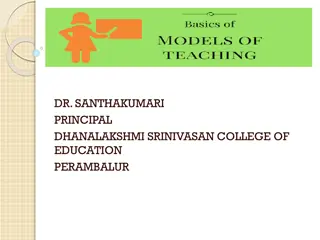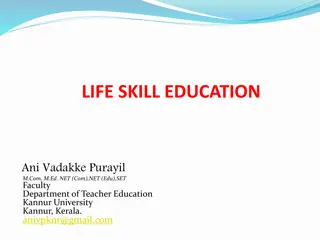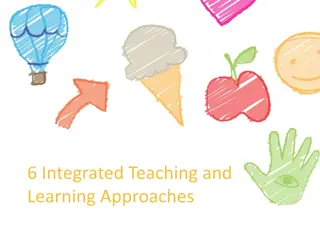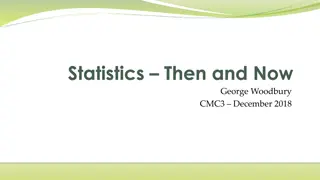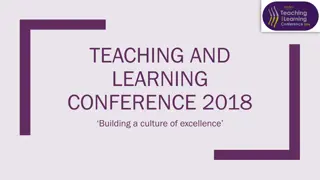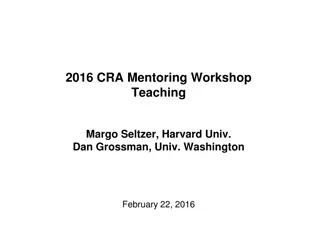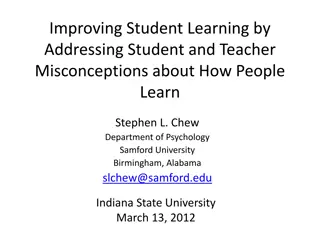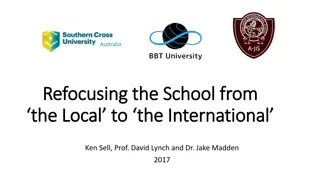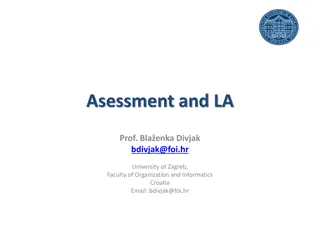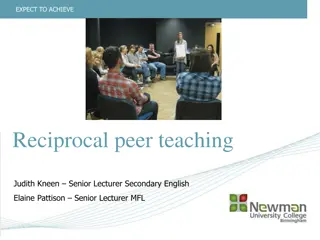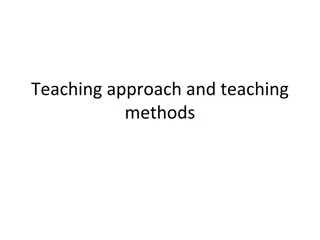Teaching Practical Skills - Effective Approaches for Learning
Identify teaching approaches for basic practical skills like communication, physical examination, and clinical techniques. Explore techniques for soft skills and communication learning through observation. Understand Maslow's Hierarchy of Needs in education.
Download Presentation

Please find below an Image/Link to download the presentation.
The content on the website is provided AS IS for your information and personal use only. It may not be sold, licensed, or shared on other websites without obtaining consent from the author.If you encounter any issues during the download, it is possible that the publisher has removed the file from their server.
You are allowed to download the files provided on this website for personal or commercial use, subject to the condition that they are used lawfully. All files are the property of their respective owners.
The content on the website is provided AS IS for your information and personal use only. It may not be sold, licensed, or shared on other websites without obtaining consent from the author.
E N D
Presentation Transcript
Teaching PRACTICAL SKILLS
Objective: To identify teaching approaches of basic practical skills which provide evidence with respective effective students learning. Practical skills are an essential part of physicians daily routine. Often medical graduates performance is below expected level.
Definition: Basic practical skills include Communication skills Physical examination skills Practical skills Psychomotor skills Clinical skills Technical skills Current approach is development of competence based under graduate curriculum imparting knowledge skill and attitude to be acquired.
Basic practical skills are not unanimously defined. Its a loose term which includes Procedural skills Surgical skills Physical examination skills Clinical skills Hands on skills Basic skills Technical skills Motor skills Broadly includes skills for physical diagnosis and skills in instrumental procedures.
These skills can be taught or learned in following phases a. Watching the teacher performing the respective skill b. Conducting the skill one self under supervision. c. Use the skill appropriately to the situation one self. This approach helps in acquiring skills like - physical examination skills - routine medical skills -routine practical skills eg: Bladder catheterization eg: Auscultation eg: Venepuncture However soft skills , skills in emergency, communication skills need a different approach.
Soft skills and communication skills are better learnt by observation.
Maslows Hierarchy of needs: It states the needs of individual to be taken care of right from biological needs to achieving one s full potential. Physiological Safety Belonging Esteem Self Actualization - achieving one s full potential - - Emotional and intellectual safety - friendship, belonging to group - self-esteem, achievement food, water, shelter, sleep
Maslows Hierarchy of needs: A simily from story of Buddha
Teaching learning methods for basic practical skills Skill Teaching / learning method Structured skills training Simulation Different instructors Multimedia assisted instruction Voluntary training Feedback Observing peers Reflective writing Ultrasonography Physical examination
Structured skills training Multimedia-assisted instruction Self guided learning Feedback Different instructors Kinesthetic method Learning goals Mental imagery Voluntary training Different instructors Simulation Sum charts Suturing Cannulation
Different skills training Simulation Different instructors Venepuncture Structured skills training Simulation Different instructors Injection Different instructors Multimedia assisted instruction Bladder Catheterization Simulation Peyton s Four-Step Approach Gastric tube insertion
Teaching / learning method Number of papers Structured skills training 10 Different instructors 10 Multimedia assisted instruction 8 Simulation 7 Feedback 5 Self-guided learning 4 Voluntary training 2 Observing peers 1 Reflective writing 1 Ultrasound 1 Kinesthetic method 1 Learning goals 1 Mental imagery 1 Sum charts 1 Peyton s Four Step Approach 1
Structured Skills Training : Objective Structured Clinical Examination(OSCE) structured bedside training when given guidelines to demonstrate and observe student doing physical examination yielded better results in half of the OSCE stations covering heart and lung examination in a study conducted. Training in skills map with a set of specific exercises on dummy s for abdominal examination was showing better OSCE scores but not for cardiac auscultation.
Different Instructors: Faculty teaching Peer teaching Guiding by paramedics Teaching by general practitioners, specialists, and subspecialities faculty. Contextually made the difference in learning depending upon nature of skill being taught.
Multimedia assisted instruction: Video clips for different aspects of physical examination produced better OSCE results on watching. Students who learned with click-version of an interactive program performed better than students who worked with drag-version of the same program. Cardiac auscultation learnt with CD ROM in addition to bedside clinic have shown better results. Feedback with a provision to watch one s own performance on a video was associated with better suturing skills than verbal feedback. For bladder catheterization computer assisted learning and learning with feedback on simulation produce same results.
Simulation: Students who were trained on cardiac simulator performed better when compared to students who worked only on standardized patients. Training with a manikin resulted in better chest examination skills than performing chest examination on a peer. Simulator skills lab training for cannulation , venepuncture, and injection resulted in better performance of these skills.
Feedback, self-guided learning and voluntary training: Feedback has been identified as a n important method to improve the learning skills. Structured weekly programs for physical examination skills described above with ongoing formative assessment and feedback by the instructor eventually showed better OSCE performance. Verbal feedback from an expert seems more effective than self accessed computer generated feedback for skills like suturing.
Other teaching/ learning methods: Observing peers performing than just receiving feedback from a patient instructor . Using ultrasonography in learning clinical examination showed some improvement for correct lung and liver palpation but not for thyroid palpation. Better cannulation skills could be demonstrated by students using cumulative sum charts to log their cannulation attempts during their final year.
Peytons teaching approach A step wise technical approach following four steps Demonstration Deconstruction Comprehension Performance
Demonstration The teacher performs the skill in real time without comment. Deconstruction The teacher performs every step slowly with an added explanation. The skill should be divided into smaller subsections. Comprehension The student describes every step of the skill whereupon the teacher performs on instruction. The description and execution do not occur simultaneously Performance The student simultaneously narrates and executes step by step.
Discussion: Many different variables have been identified from controlled studies to influence students learning of basic practical skills ranging from more global factors like structured skills training multimedia assisted instruction or different instructors to specific teaching methods like feedback, mental imagery or Peyton s Four-Step approach. Besides very heterogeneous teaching methods, the teaching itself was applied in different phases of the undergraduate medical curriculum from first year to final year.
There is no substitute for experience Thank You
